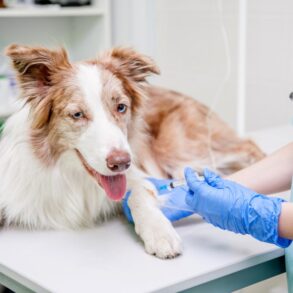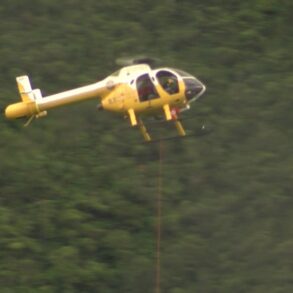
New archaeological evidence indicates humans in the Americas may have had domesticated canines that depended on them for food as early as 12,000 years ago, based on findings of salmon proteins in canine bones.
A recent study published in the journal Science Advances reveals that humans in the Americas and the ancestors of modern dogs began forming close relationships as early as 12,000 years ago – about 2,000 years earlier than previously recorded. This research, based on archaeological remains found in Alaska, provides novel insights into how Indigenous peoples in the Americas interacted with early dogs and wolves.
“We now have evidence that canids and people had close relationships earlier than we knew they did in the Americas,” said lead study author François Lanoë, an assistant research professor at the University of Arizona School of Anthropology in the College of Social and Behavioral Sciences.

“People like me who are interested in the peopling of the Americas are very interested in knowing if those first Americans came with dogs,” Lanoë added. “Until you find those animals in archaeological sites, we can speculate about it, but it’s hard to prove one way or another. So, this is a significant contribution.”
Lanoë and his colleagues unearthed a tibia, or lower-leg bone, of an adult canine in 2018 at a longstanding archeological site in Alaska called Swan Point, about 70 miles southeast of Fairbanks. Radiocarbon dating showed that the canine was alive about 12,000 years ago, near the end of the Ice Age. In June 2023, the researchers conducted another excavation at a nearby site called Hollembaek Hill, south of Delta Junction, where they found an 8,100-year-old canine jawbone. This find also exhibits signs of possible domestication.
Uncovering Ancient Canine Diets
Chemical analyses of both bones revealed substantial contributions from salmon proteins, indicating the canine had regularly eaten the fish. This was not typical of canines in the area during that time, as they hunted land animals almost exclusively. The most likely explanation for salmon showing up in the animal’s diet? Dependence on humans.
“This is the smoking gun because they’re not really going after salmon in the wild,” said study co-author Ben Potter, an archaeologist with the University of Alaska Fairbanks.
The researchers are confident that the Swan Point canine helps establish the earliest known close relationships between humans and canines in the Americas. But it’s too early to say whether the discovery is the earliest domesticated dog in the Americas.

That is why the study is valuable, Potter said: “It asks the existential question, what is a dog?”
The Swan Point and Hollembaek Hill specimens may be too old to be genetically related to other known, more recent dog populations, Lanoë said.
“Behaviorally, they seem to be like dogs, as they ate salmon provided by people,” Lanoë said, “but genetically, they’re not related to anything we know.”
He noted that they could have been tamed wolves rather than fully domesticated dogs.
‘We still had our companions’
The study represents another chapter in a longstanding partnership with tribal communities in Alaska’s Tanana Valley, where archaeologists have worked since the 1930s, said study co-author Josh Reuther, an archaeologist with the University of Alaska Museum of the North.
Researchers regularly present their plans to the Healy Lake Village Council, which represents the Mendas Cha’ag people indigenous to the area, before undertaking studies, including this one. The council also authorized the genetic testing of the study’s new specimens.
Evelynn Combs, a Healy Lake member, grew up in the Tanana Valley, exploring dig sites as a kid and taking in what she learned from archaeologists. She’s known Lanoë, Potter, and Reuther since she was a teenager. Now an archaeologist herself, Combs works for the tribe’s cultural preservation office.

“It is little – but it is profound – to get the proper permission and to respect those who live on that land,” Combs said.
Healy Lake members, Combs said, have long considered their dogs to be mystic companions. Today, nearly every resident in her village, she said, is closely bonded to one dog. Combs spent her childhood exploring her village alongside Rosebud, a Labrador retriever mix.
“I really like the idea that, in the record, however long ago, it is a repeatable cultural experience that I have this relationship and this level of love with my dog,” she said. “I know that throughout history, these relationships have always been present. I really love that we can look at the record and see that thousands of years ago, we still had our companions.”
Reference: “Late Pleistocene onset of mutualistic human/canid (Canis spp.) relationships in subarctic Alaska” by François Lanoë, Joshua Reuther, Stormy Fields, Ben Potter, Gerad Smith, Holly McKinney, Carrin Halffman, Charles Holmes, Robin Mills, Barbara Crass, Ryan Frome, Kyndall Hildebrandt, Robert Sattler, Scott Shirar, Alida de Flamingh, Brian M. Kemp, Ripan Malhi and Kelsey E. Witt, 4 December 2024, Science Advances.
DOI: 10.1126/sciadv.ads1335
This post was originally published on this site be sure to check out more of their content.











































